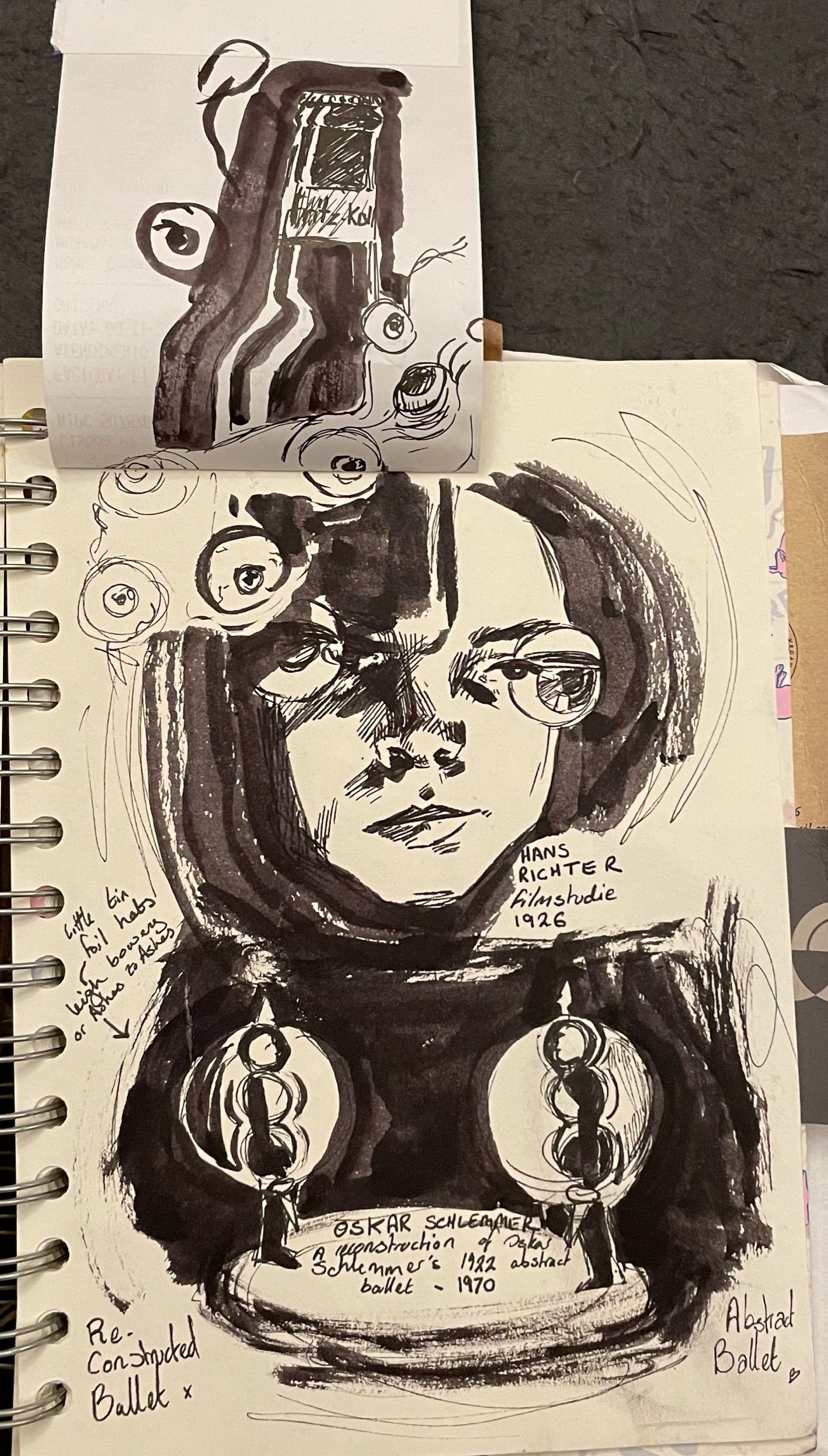Week 7 - Portgual
This week admittedly my art practice wasn’t super involved so I’m looking more into artist’s works that I saw when I was away at the Museu Coleção Berardo in Belem, Lisbon.
Tàpies, A. (1962) Tot Negre amb Clivelles / Negro con Greta
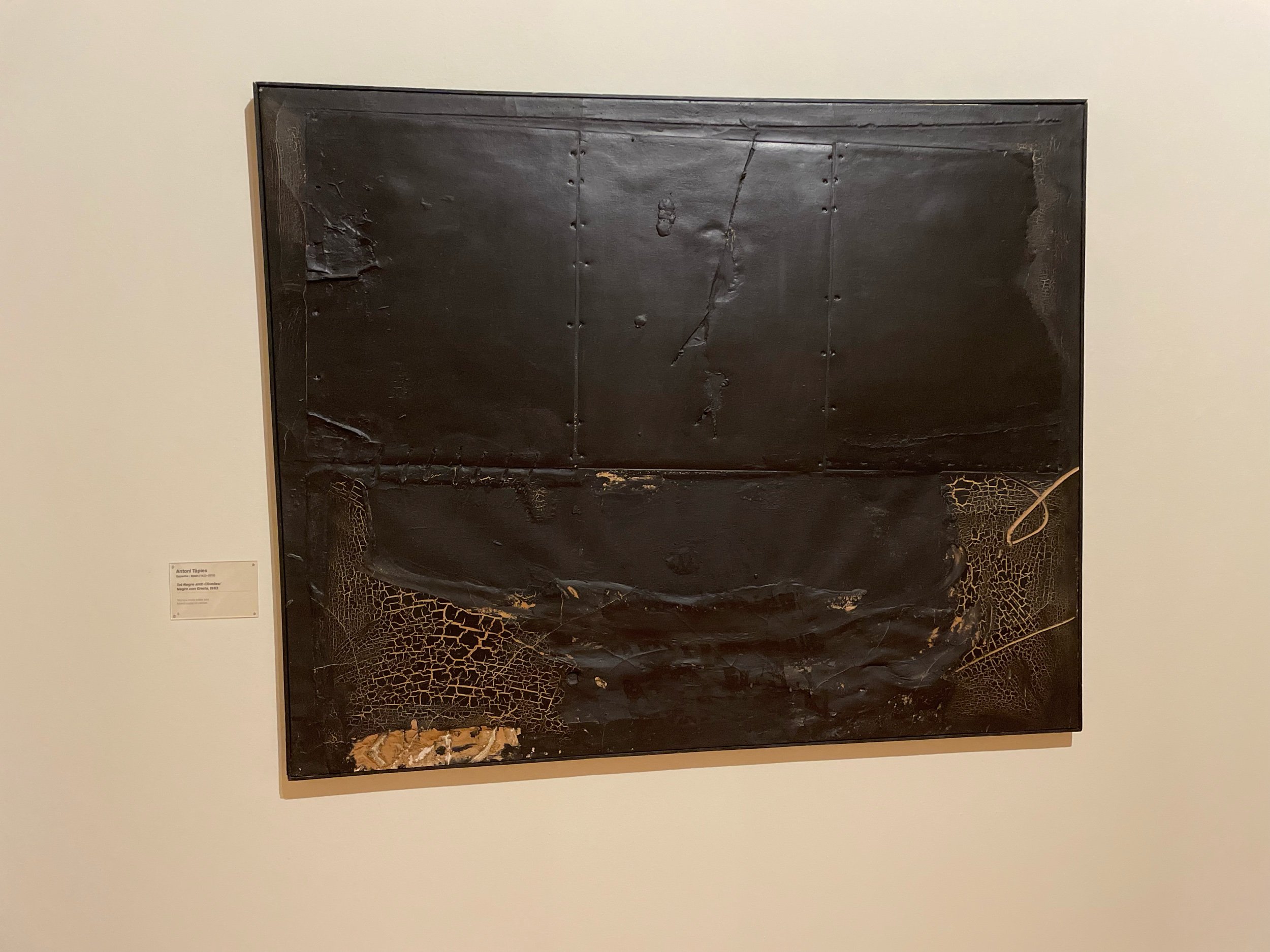
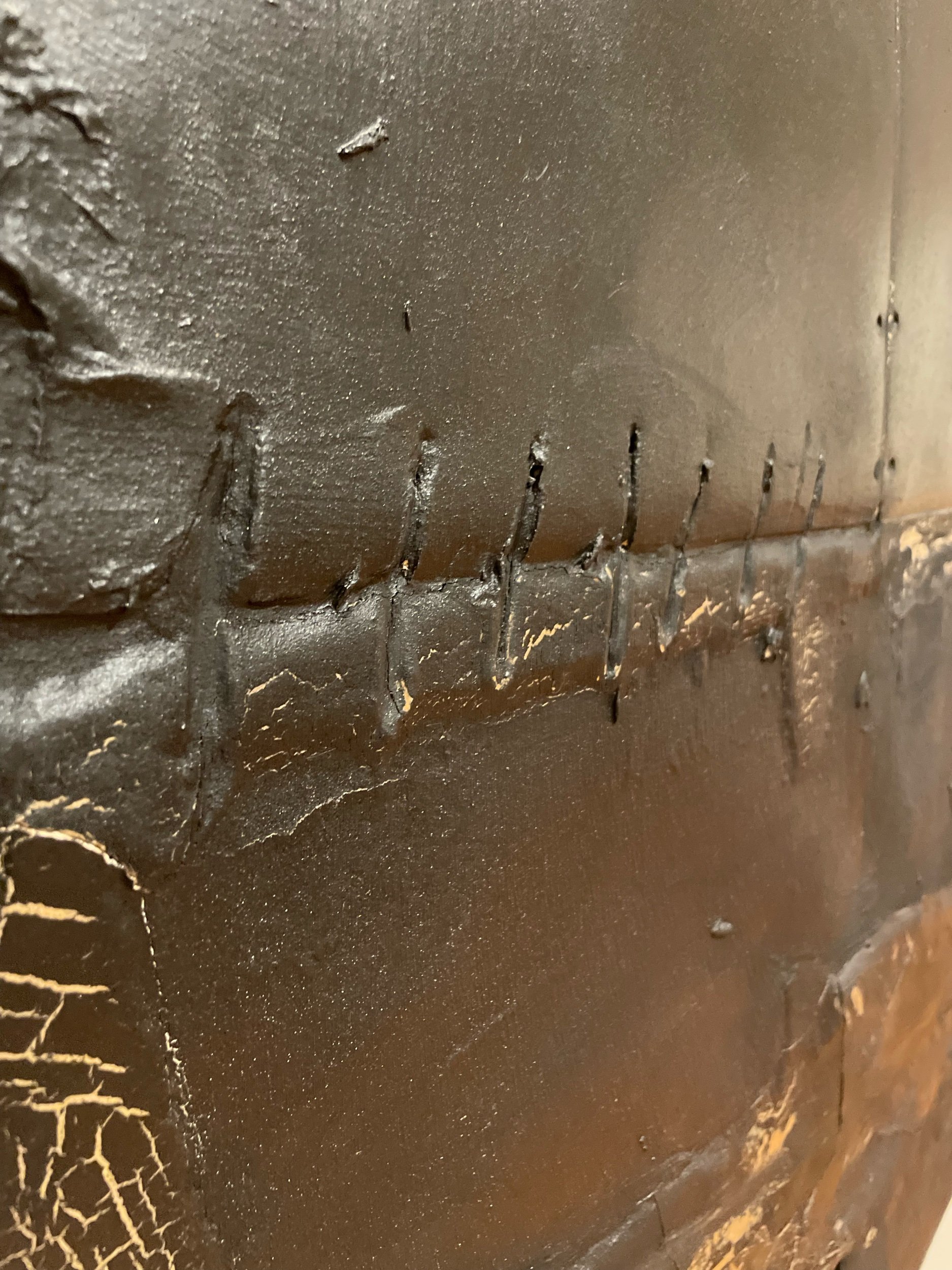
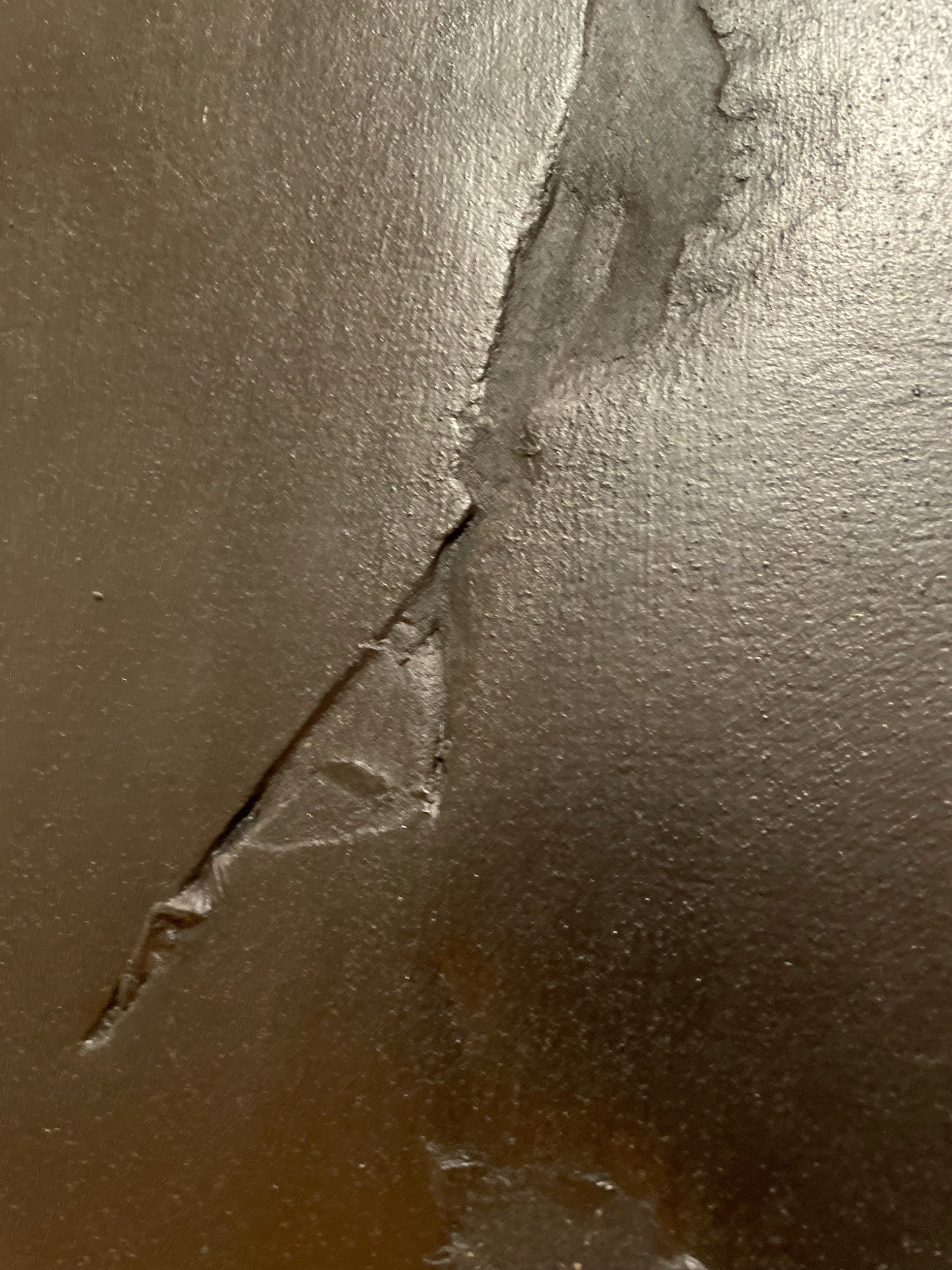
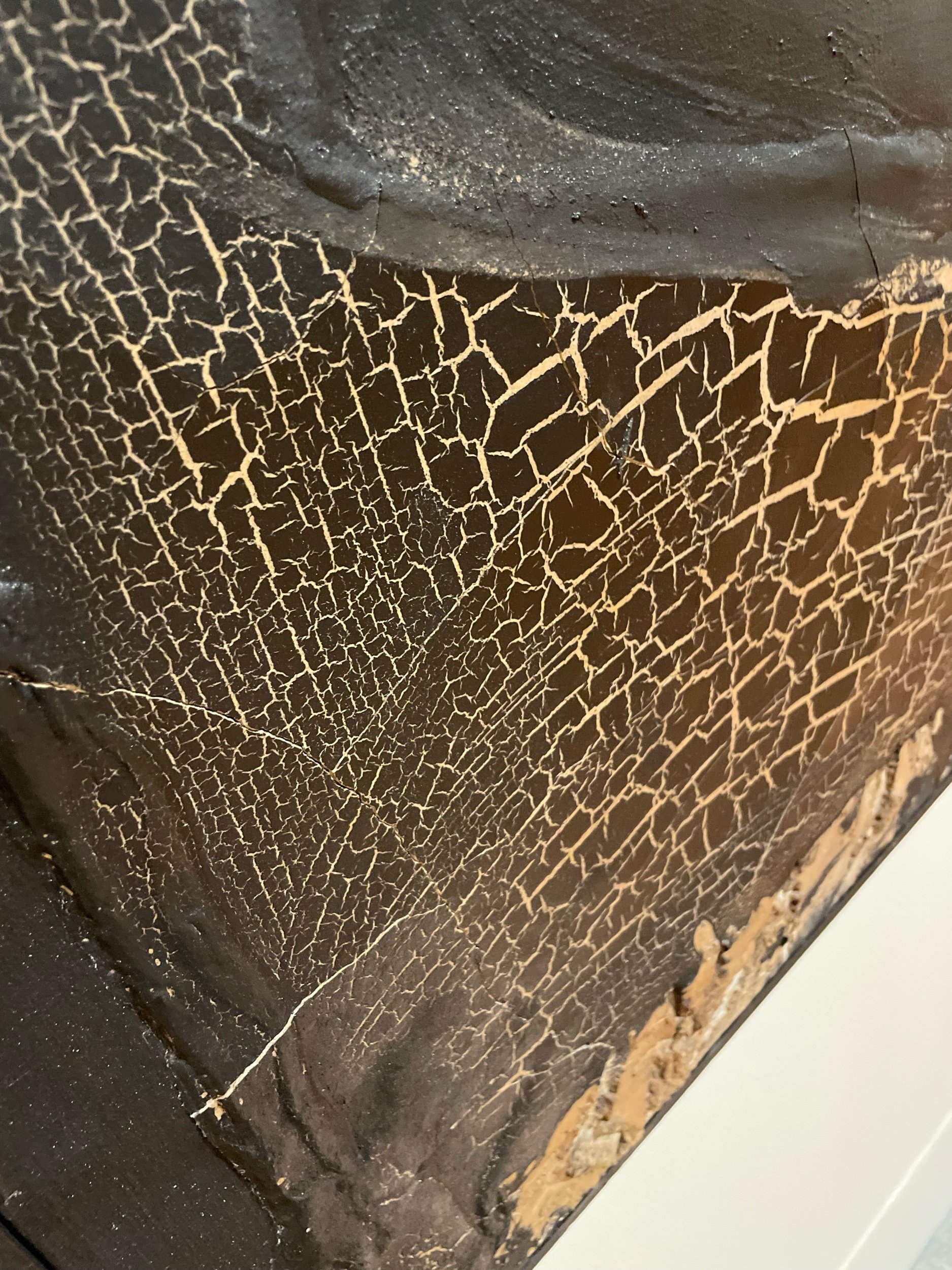
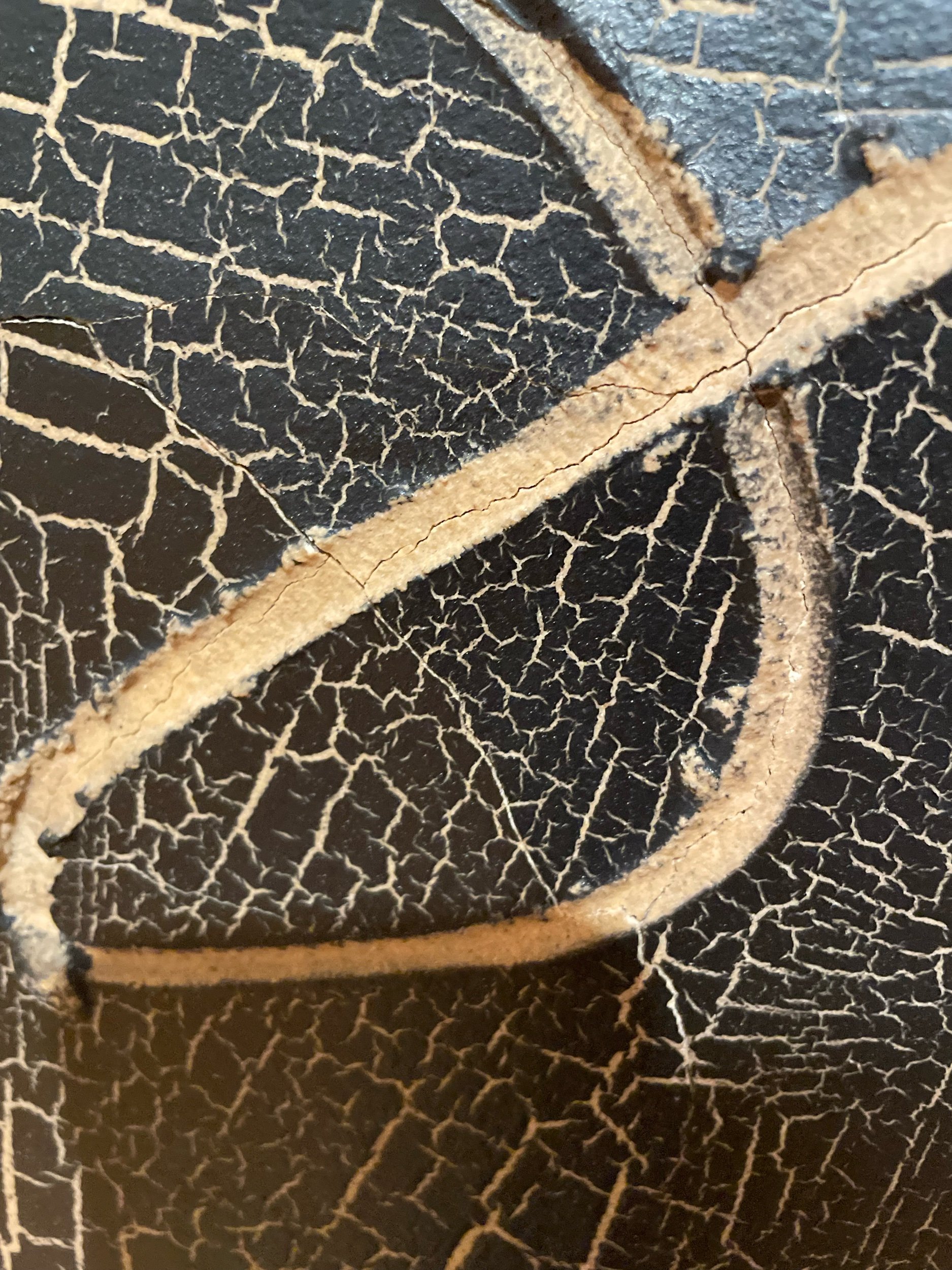
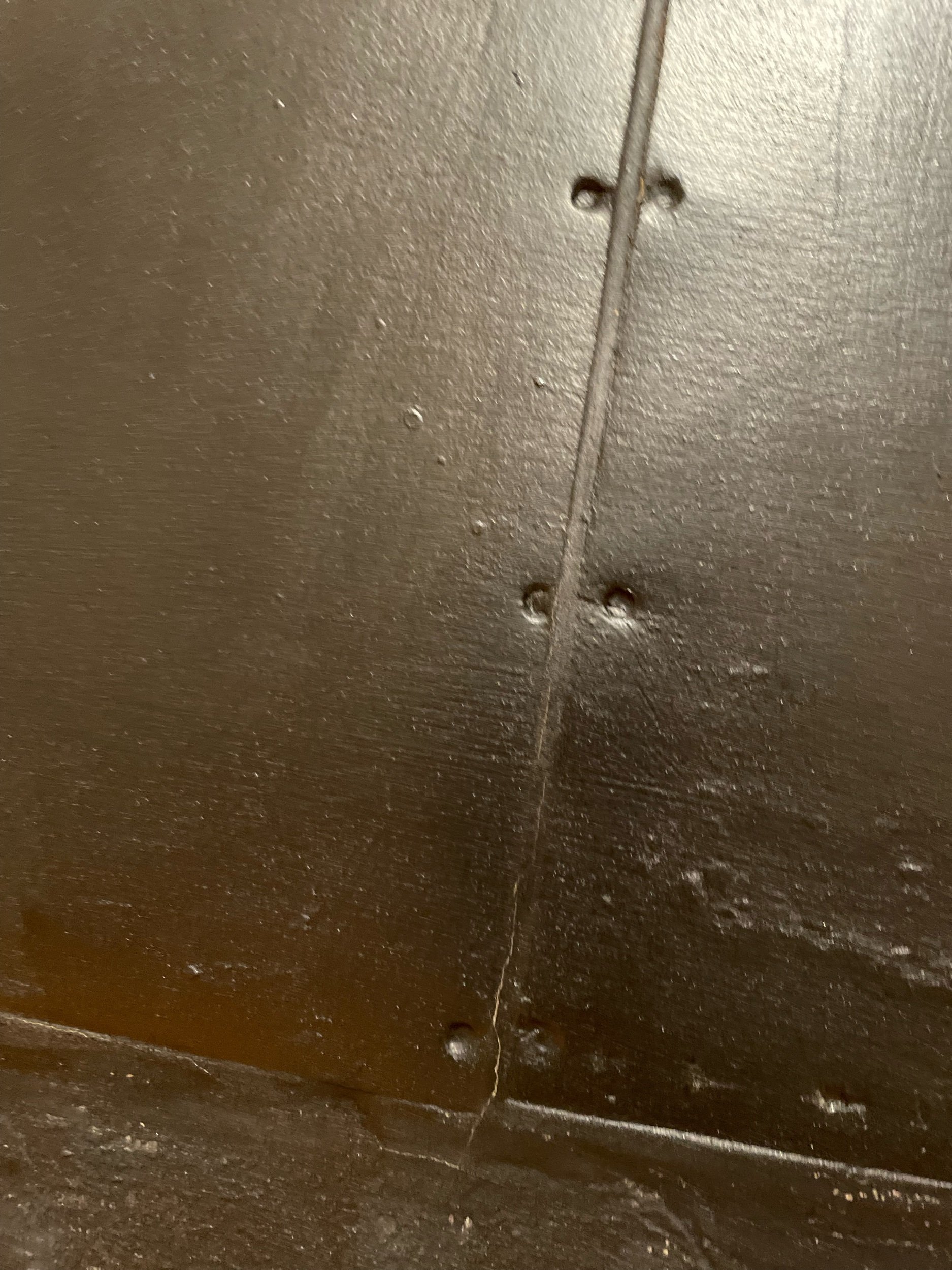
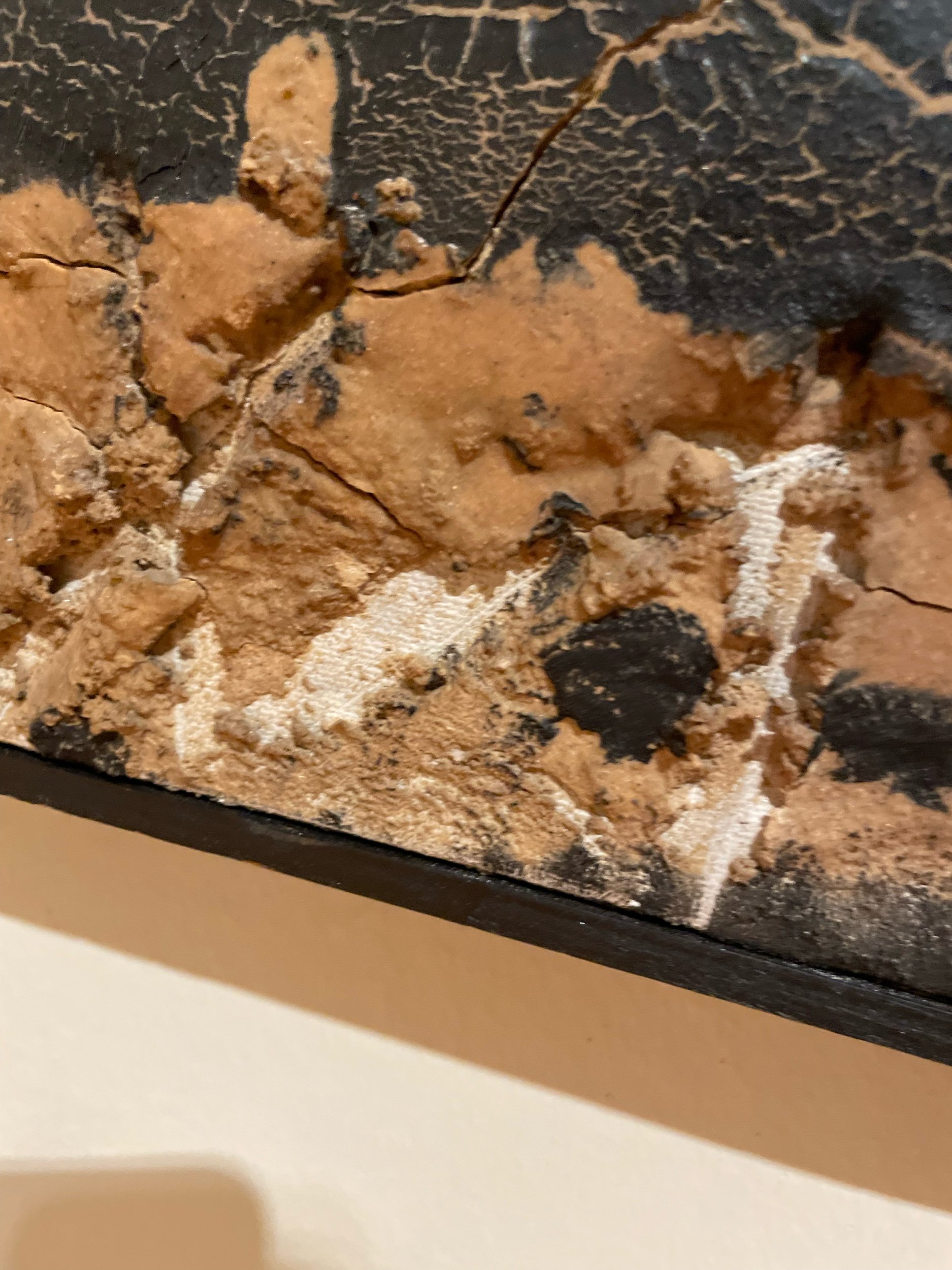
Tàpies, A. (1962) Tot Negre amb Clivelles / Negro con Greta
I’ve already realised I prefer canvas to wood but what about painting on textured surfaces and how I can tell narratives through the texture alone and in a similar vein I was interested in the works of…
Fontana, Manzoni, and Klein
Yes Klein - Pigment on blue on sculpture vs Canvas
Polymorphous, multifaceted, and eminently personal, the work of Argentine-Italian artist Lucio Fontana is one of the main representatives of European modernity. Founder of the Spatialist movement in 1947, his perforated canvasses sitate him among the most radical artists of our century and continue to herald a tradition of artistic practice based on a propensity for matter and colours. He broke with traditional formats of painting and sculpture, proposing what he called concetti spaziali (spatial concepts), transforming two-dimensional objects into three-dimensional spatial explorations, buchi (holes), and (slashes). Although they are painted, concetti spaziali are "two-dimensional sculptures."
It can be said that Fontana's main contribution was the broadening of the understanding of the canvas and its surface as a field of representation, overcoming objectuality. The canvas became a space in which possible gestures included not only addition (of colours and forms) but also subtraction, perforation, and laceration. Paradoxically, these works, which possess an obvious conceptual gesture, are highly sensual as a result of both their forms (oval.for example and the materials used (thick oils and non-pictorial substances), suggesting openings of the body. Lucio Fontana influenced the establishment of Group ZERO, in which he took part, blurring the lines between art and the Physical world, between artistic materials and unconventional objects. The works present in the Berardo Collection, Concetto Spaziale, rom 1956 and Concetto Spaziale - Attesa, from 1960, demonstrate a practice based on a concept which would sustain all of his work after the Second World War. and which would be characterised by the revolution in the materials used to make a transformation in the conventional relationship between the artwork and its surrounding space. The gesture as endless tension in the search for an absolute-where the pictorial space and the place of the observer exist in congruence, and where the canvas is not recognised as a gateway restricted to what is meant to be represented there--also introduces a sublime relationship between paintina, sculpture, and performance, as these paintingsComprise of characteristics associated with space, the latter oniv conferred of the performative act of the artist when he tears the work. Piero Manzoni is a self-taught Italian artist, famous for his series of works which question the nature of the artwork, prefiguring conceptual art. His pieces avoid conventional materials to explore mythological sources of artistic and aesthetic value, exploring, for example, ideas authenticity and universalitv. in a criticism of the consumerism of italian Society following the Second World War.
In 1957. Manzoni discovered Yves Klein's monochromes and produced his first Achromi (achromes). The Achromi 'are "sculpture-paintings similar in thought to Marcel Duchamp and the readymade, created from found materials that erase an trace of personality, and are distinquished by the attempted absence of colour. He met Lucio Fontana through the Movimento Nucleare, and from 1959 onwards began to participate in Group ZERO.
The Achrome works from 1958 and 1962 are indicative of Piero Manzoni's work following his visit to the exhibition Epoca Blu, by Yves Klein, after which he ceased to produce works influenced by the predominant trends in art informel. These pieces, generally made of fabric covered in kaolin, or sometimes squares of cloth cut out, covered, and stuck onto the prepared canvas. reveal the influence of Lucio Fontana and Alberto Burri, as well as that or North-American artist Robert Rauschenberg. TO Manzoni, unlike Klein, painting was a material and finite search, an anchorage in matter, and in 1956 he began to build theoretical work around what he initially called an "organic painting." The Achromi are tangible and tactile matter
- Museum Description
Larry Rivers - French Vocabulary Lesson III (1964)
Francis Bacon - Oedipus and the Sphinx after Ingres (1983)
Julião Sarmento: Abstracto, Branco, Tóxico e Volátil (2022)
As the museum was closing during my visit I never got to see much of Sarmento’s exhibition but I like how his concepts are visually and thematically explored throughout his body of work.
A House to Hide (with trapeze) 2006 - Fibreglass, Resin, Aluminium, Wire, Glass, Milk
Sketchbook
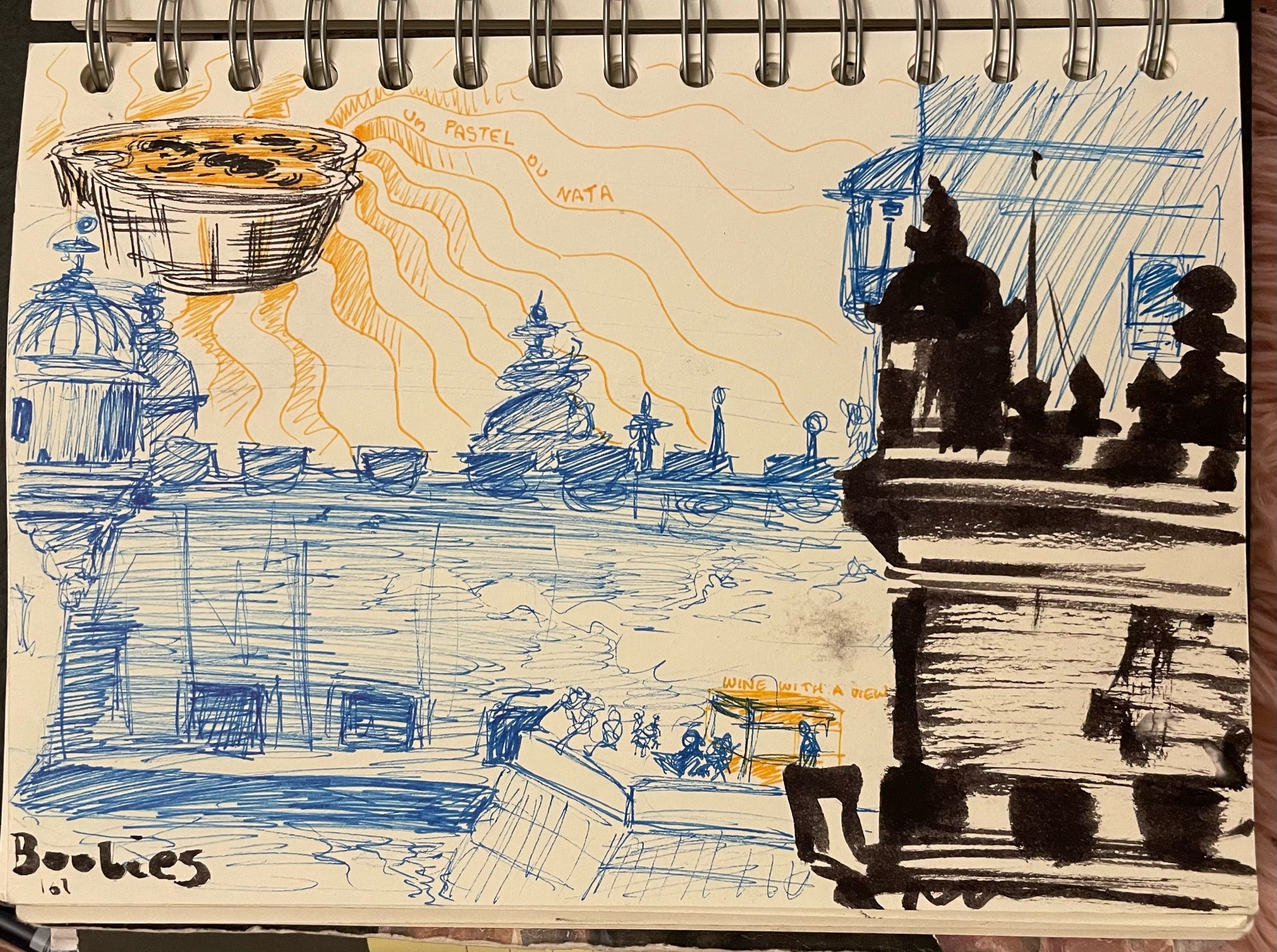
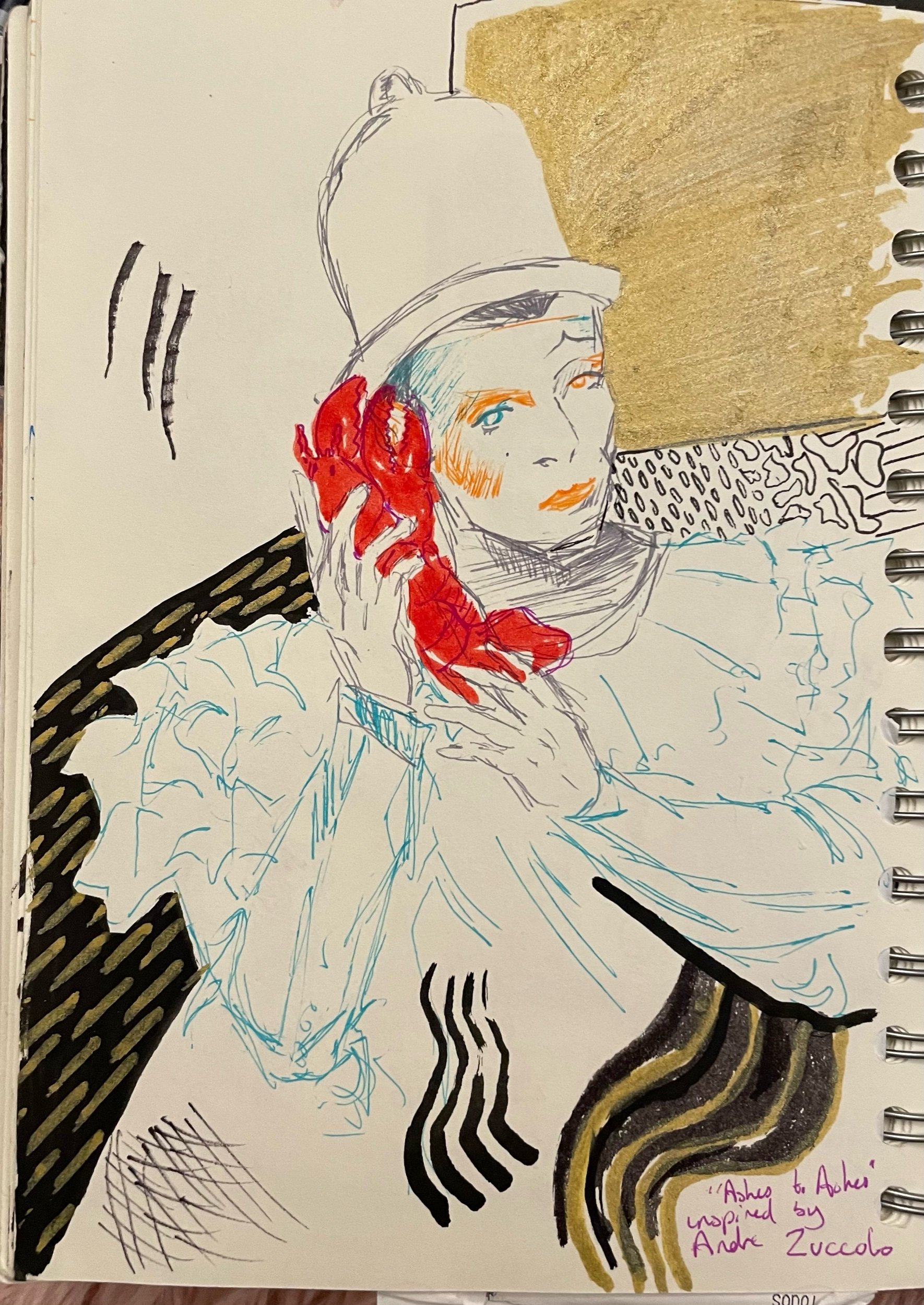
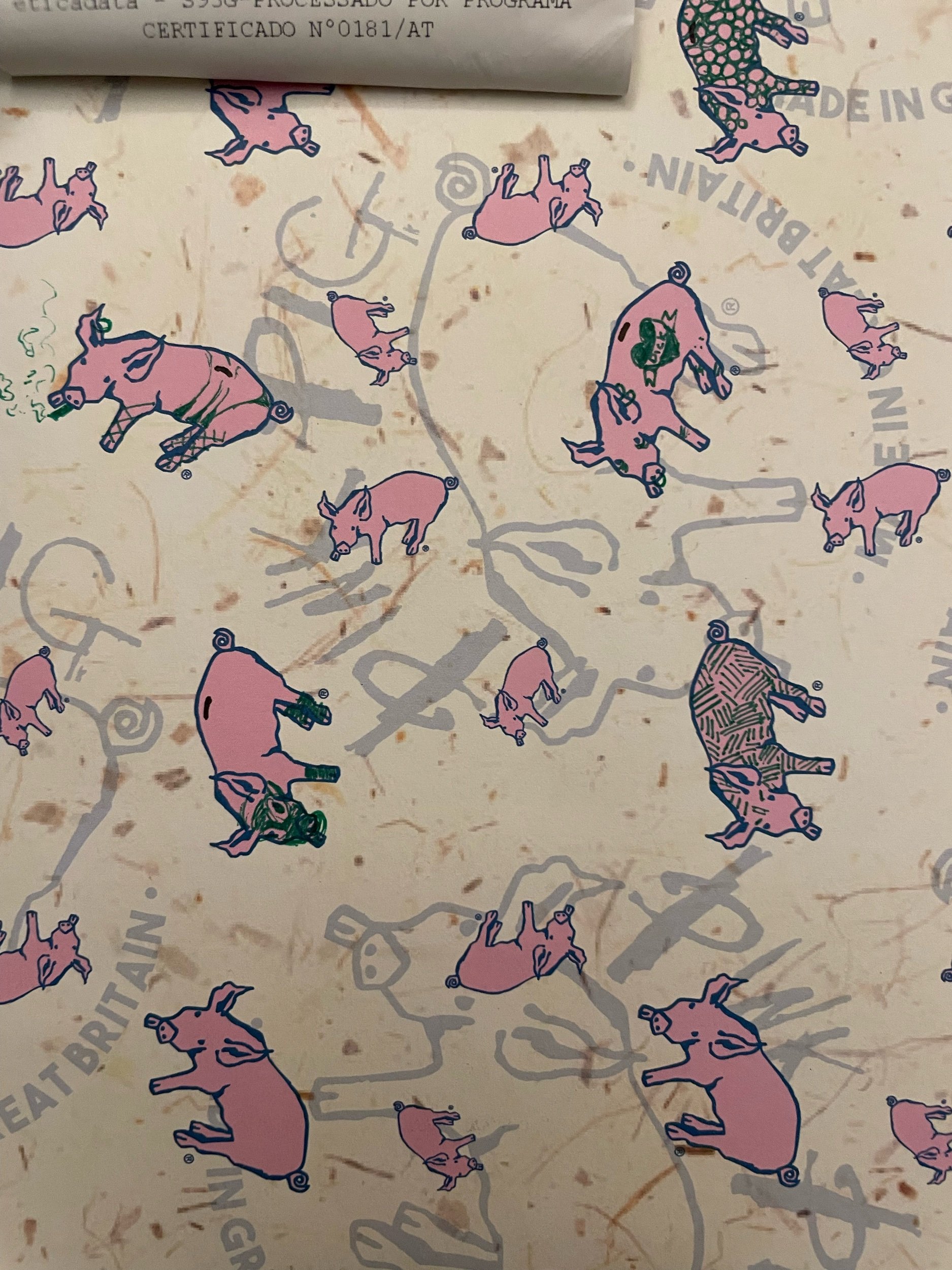
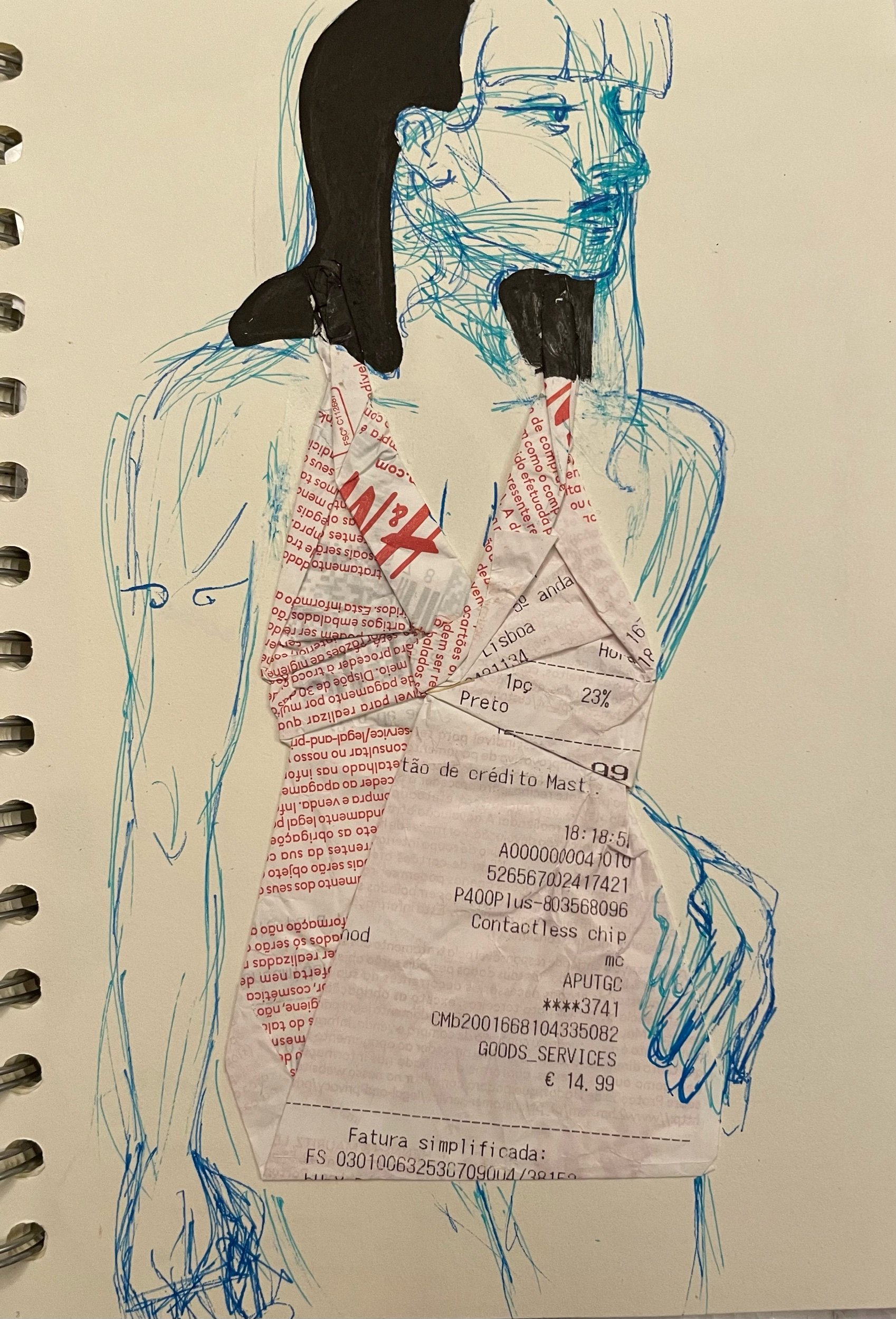

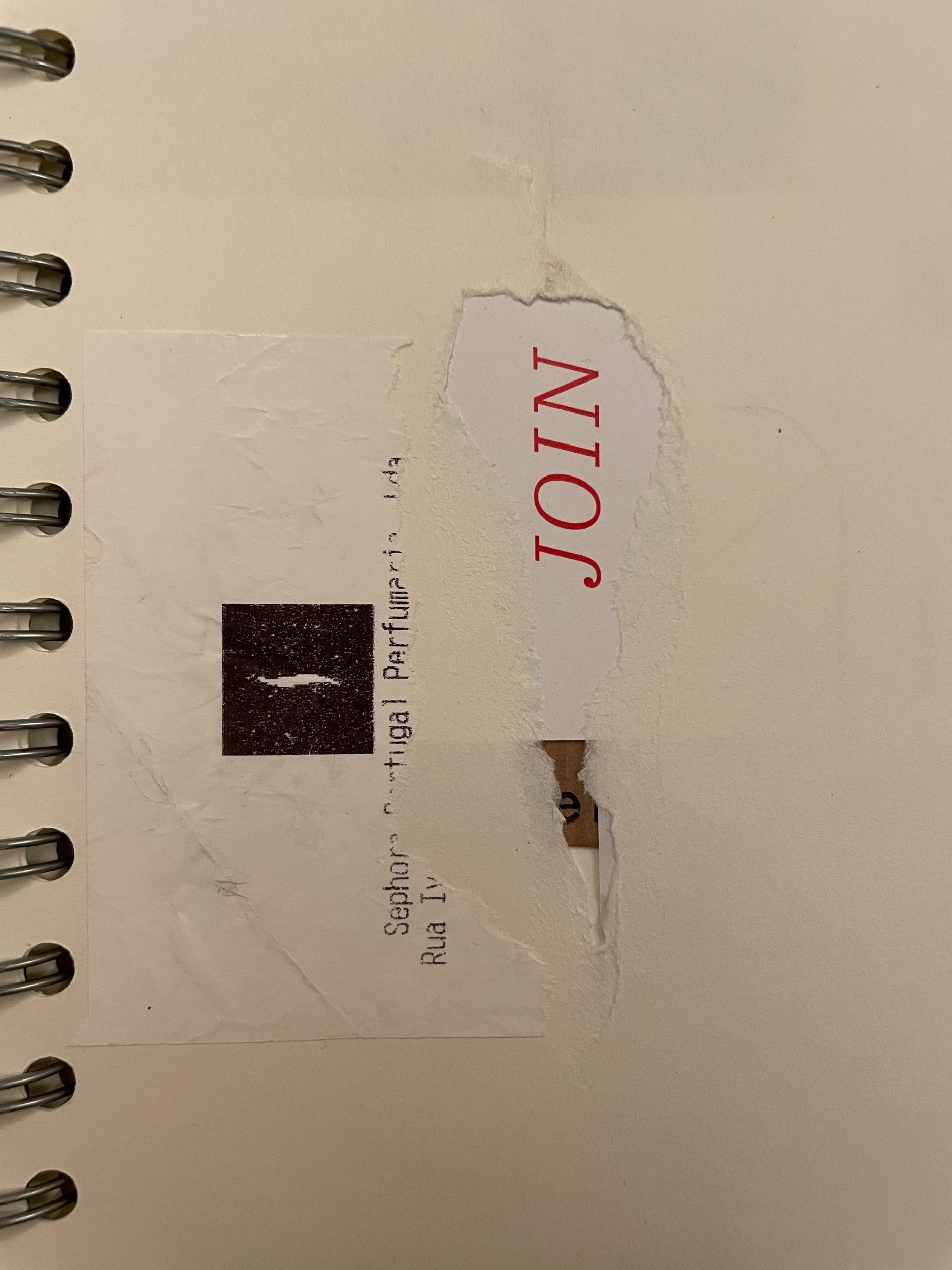
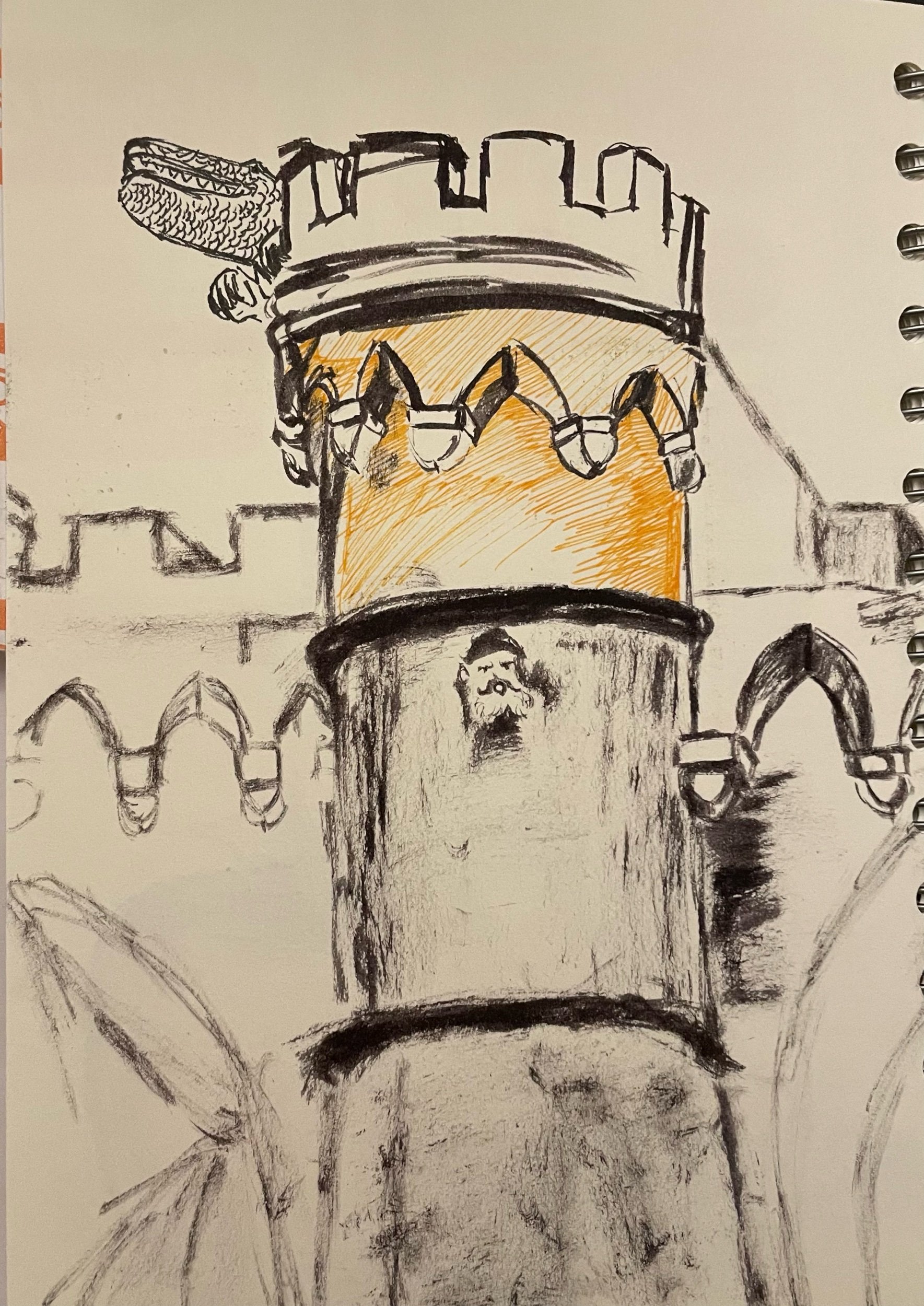
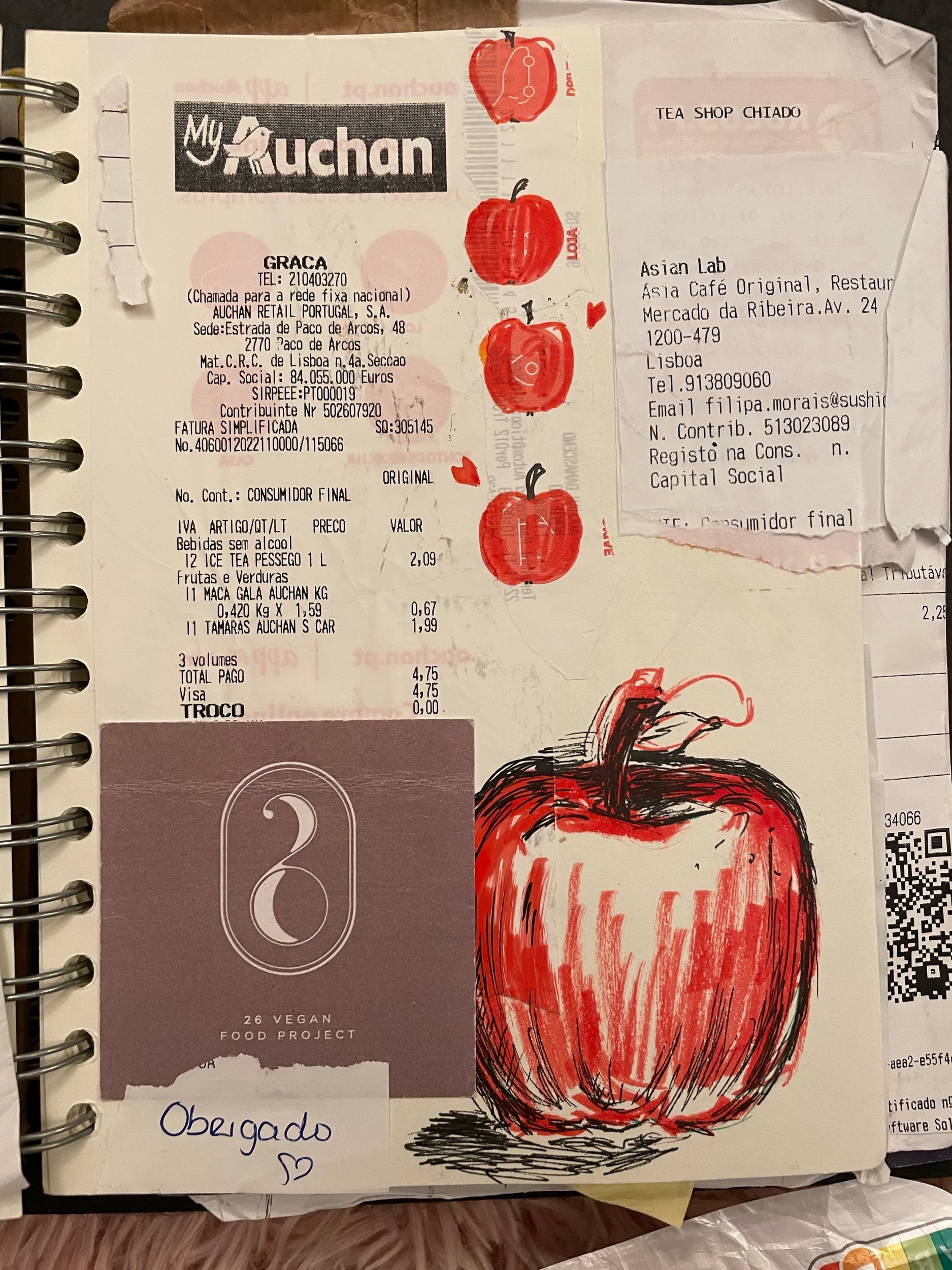
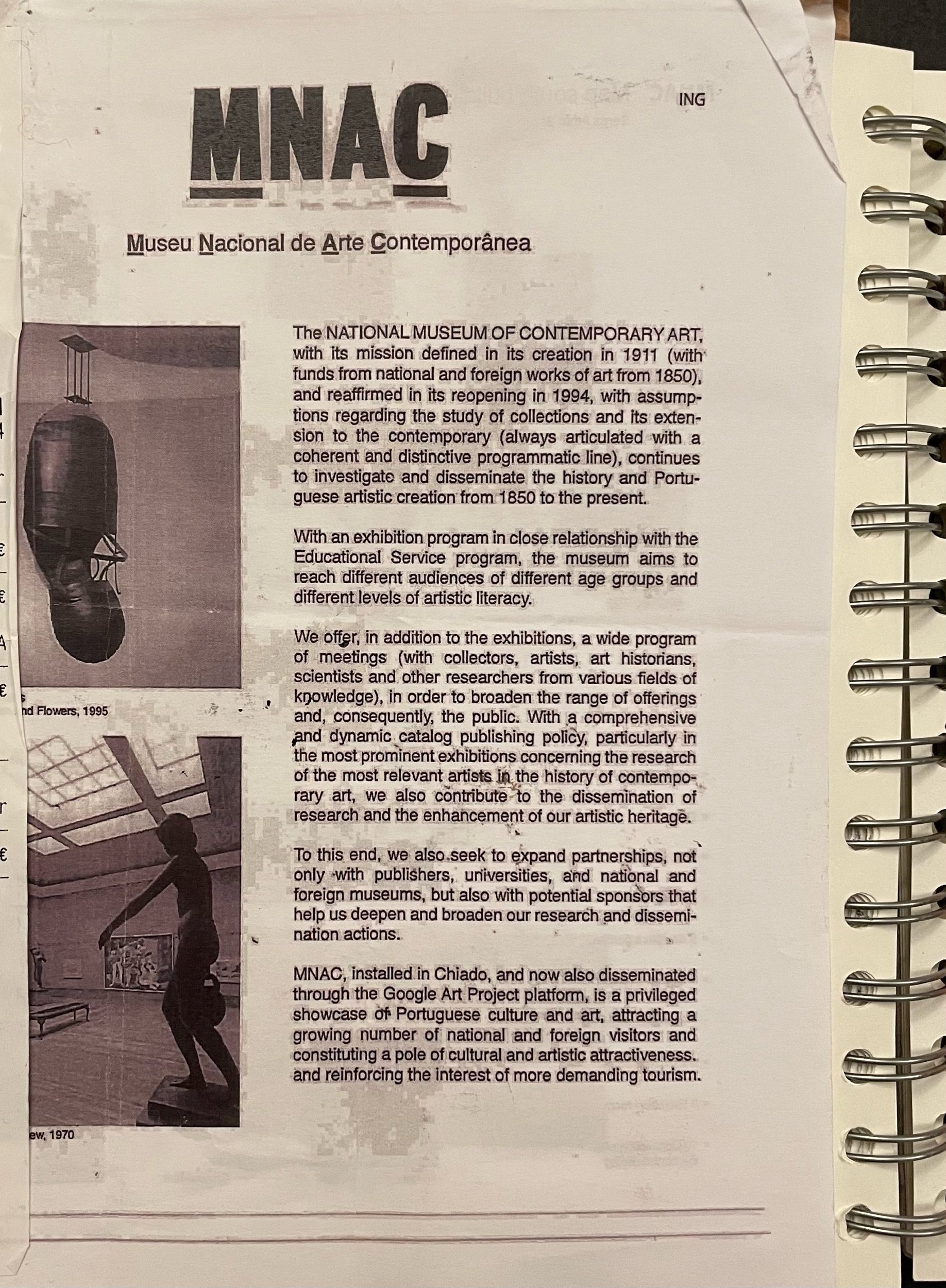
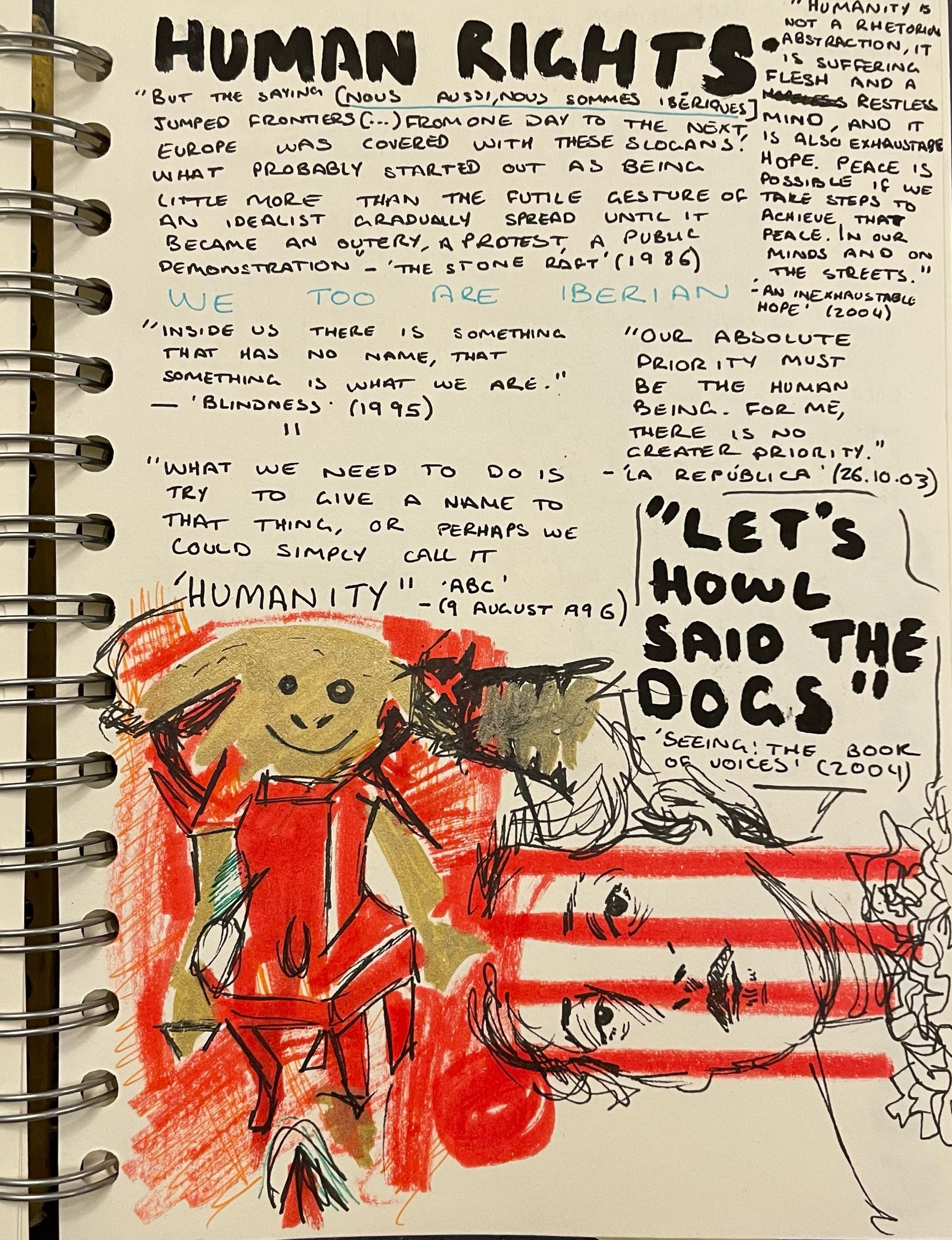
Summary..
Most of my time in Lisbon was to be a break for me, a chance to experience a different culture for the first time in over a decade. Their national galleries seem so much more enamoured with the contemporary art scene compared to Edinburgh’s for example. Other than the surface texture exploration and getting the opportunity to see Bacon’s work close-up, the most beneficial thing for me to come from this trip was to refill my creative tank and get me raring to go, being subtly influenced by the warm sun, and pastel de nata.
Reference List
Bacon, F. (1983) Oedipus and the Sphinx after Ingres [oil on canvas] Museu Coleção Berardo (Viewed: 9 November 2022)
Berardo Collection from the First Modernism to the New Avant-gardes of the 20th Century: Fontana, Manzoni, and Klein (2020-2022) [Permanent Exhibition] Lisbon: Museu Coleção Berardo. Installed 15 July 2020 to present day. (Viewed: 9 November 2022)
Rivers, L. (1964) French Vocabulary, Lesson III [Oil on Canvas] Museu Coleção Berardo (Viewed: 9 November 2022)
Sarmento, J. (2006) A House to Hide (with trapeze) [Fibreglass, Resin, Aluminium, Wire, Glass, Milk] Museu Coleção Berardo (Viewed: 9 November 2022)
Sarmento, J. (2022) Julião Sarmento: Abstracto, Branco, Tóxico e Volátil [exhibition] Lisbon: Museu Coleção Berardo. 12 May 2022 - 31 December 2022
Tàpies, A. (1962) Tot Negre amb Clivelles / Negro con Greta [Mixed Media on Canvas] Museu Coleção Berardo (Viewed: 9 November 2022)








